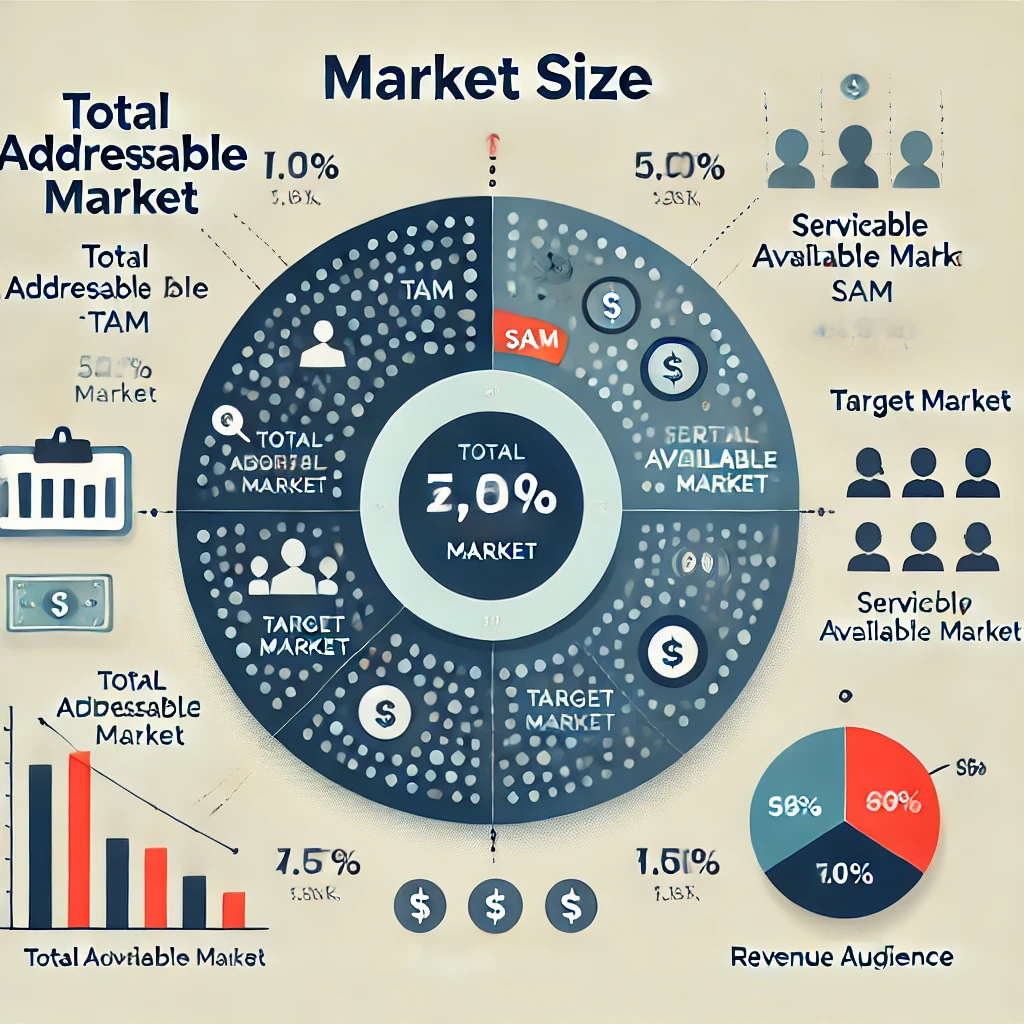Market size refers to the total number of potential customers within a specific industry or for a particular product or service. It is an essential metric for businesses looking to assess the potential for growth, profitability, and investment. By understanding the size of a market, companies can make more informed decisions about product development, marketing strategies, and resource allocation.
What is Market Size?
Market size is a measurement of the potential sales opportunities within a given market. It reflects the total demand for a product or service, typically measured in terms of the number of potential customers, total sales revenue, or the volume of products sold. A large market size indicates a vast opportunity for growth, while a small market size suggests more limited potential.
Market size is typically expressed in two ways:
- Total addressable market (TAM): The total possible demand for a product or service if it were to achieve 100% market share. This is the broadest measure of market potential and represents the maximum opportunity.
- Serviceable available market (SAM): A narrower portion of the total market that a business can realistically target, considering its products, services, and capabilities.
Understanding the market size helps businesses plan for the future by providing insights into the scale of demand, competitive pressure, and potential revenue streams.
Why is Market Size Important?
Knowing the market size is crucial for several reasons:
- Investment decisions: Investors are more likely to support businesses in markets with substantial growth potential. A large market size shows that there is significant demand for a product or service, increasing the likelihood of success.
- Business strategy: Understanding the size of the market helps businesses define their goals, allocate resources, and determine the right strategies for expansion. A company entering a large market may focus on gaining a small share initially, while one in a smaller market might aim for rapid growth.
- Revenue forecasting: By knowing the total market size, businesses can make more accurate predictions about potential sales and profitability. This is particularly important for startups seeking to validate their business models.
- Competitive analysis: Knowing the size of the market also helps businesses assess the competitive landscape. In large markets, there may be more room for multiple players, while in smaller markets, competition may be more concentrated, requiring a distinct approach to gaining market share.
How to Calculate Market Size
There are two primary approaches to calculating market size:
- Top-down approach: This method starts with the total market size and narrows it down to estimate the portion your business can realistically target. For example, if you’re selling fitness trackers, you might start by looking at the total market for wearable devices and then narrow it to the fitness segment.
- Bottom-up approach: In this method, you start with smaller data points, such as your current customer base or sales figures, and project those numbers to estimate the total potential market. This method tends to provide more accurate results, as it relies on actual data from the business itself.
Key data sources for calculating market size include industry reports, government statistics, market research studies, and sales figures.
Example of Market Size Calculation
Imagine a company developing eco-friendly home cleaning products. To calculate the market size, they may follow these steps:
- Define the total market: Begin by researching the total sales of home cleaning products in the target region. This might be a figure like $10 billion annually in the U.S.
- Segment the market: Narrow it down to the eco-friendly cleaning segment, which may represent 15% of the total market. This gives a potential market size of $1.5 billion.
- Identify the target audience: If the company plans to target households with environmentally conscious behaviors, which might make up 30% of the eco-friendly market, the specific market size for this target audience would be $450 million.
By breaking down the larger market into manageable and realistic segments, the business can assess its growth potential and set clear goals.
Factors Influencing Market Size
Several factors influence the size of a market, including:
- Demographics: Age, gender, income level, and education can all impact market size. For example, a product targeting millennials may have a different market size compared to one aimed at retirees.
- Geographic location: The size of the market often varies by region or country. A product may have a large market in urban areas but a smaller one in rural regions.
- Consumer behavior: Trends, preferences, and purchasing habits significantly affect market size. For instance, growing demand for sustainable products has increased the market size for eco-friendly goods.
- Economic conditions: Economic factors, such as income levels and consumer confidence, play a role in determining how many people are willing or able to purchase a product. Recessions can shrink market sizes, while economic booms can expand them.
Understanding market size is essential for any business looking to assess its potential for success. It provides insights into the total demand for a product or service, helps businesses plan for growth, and allows for more accurate revenue forecasting. By analyzing the market size, companies can make better decisions about resource allocation, marketing strategies, and competitive positioning. Whether targeting a large or small market, a clear understanding of its size enables businesses to thrive and adapt in a competitive landscape.


